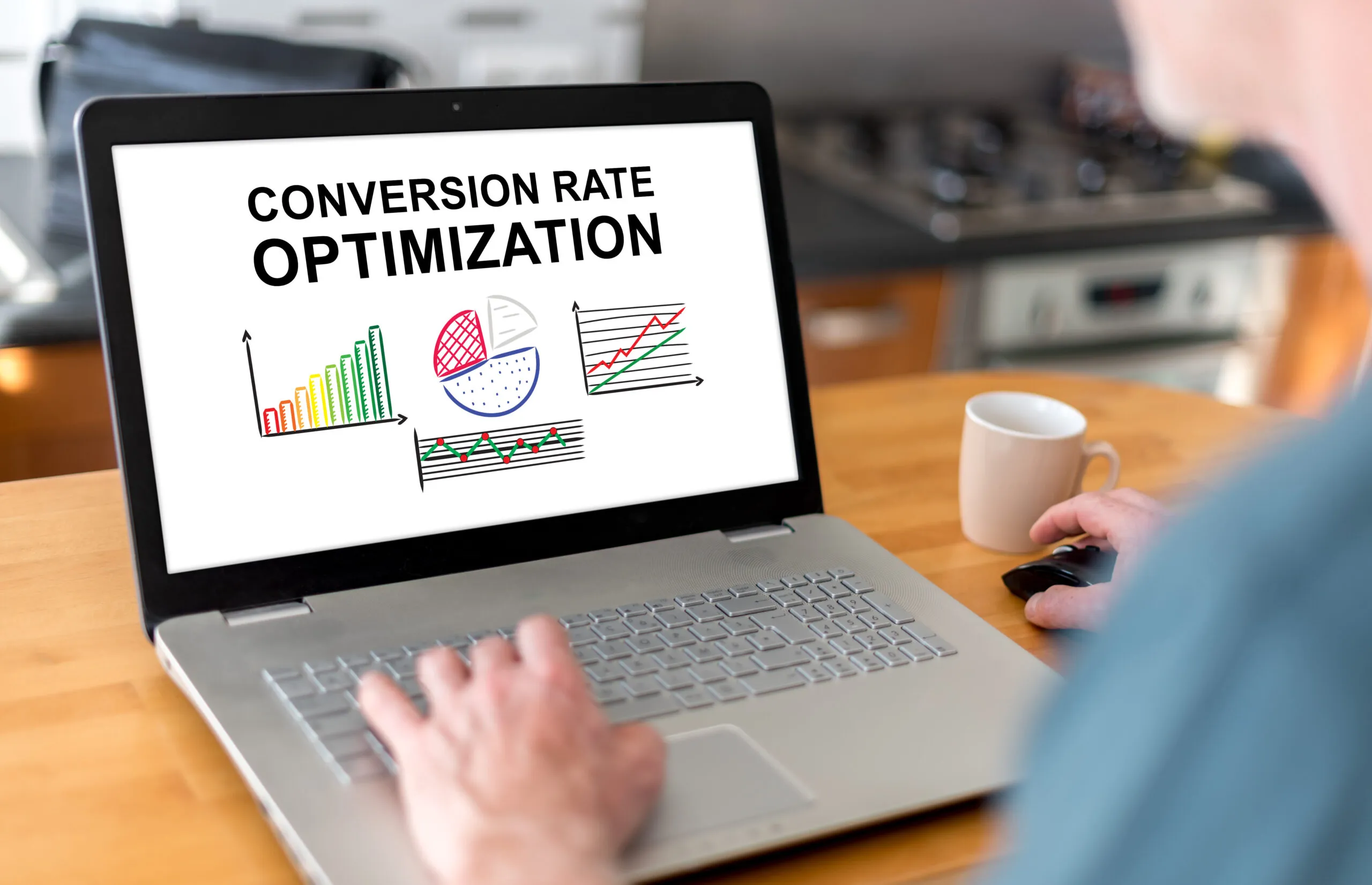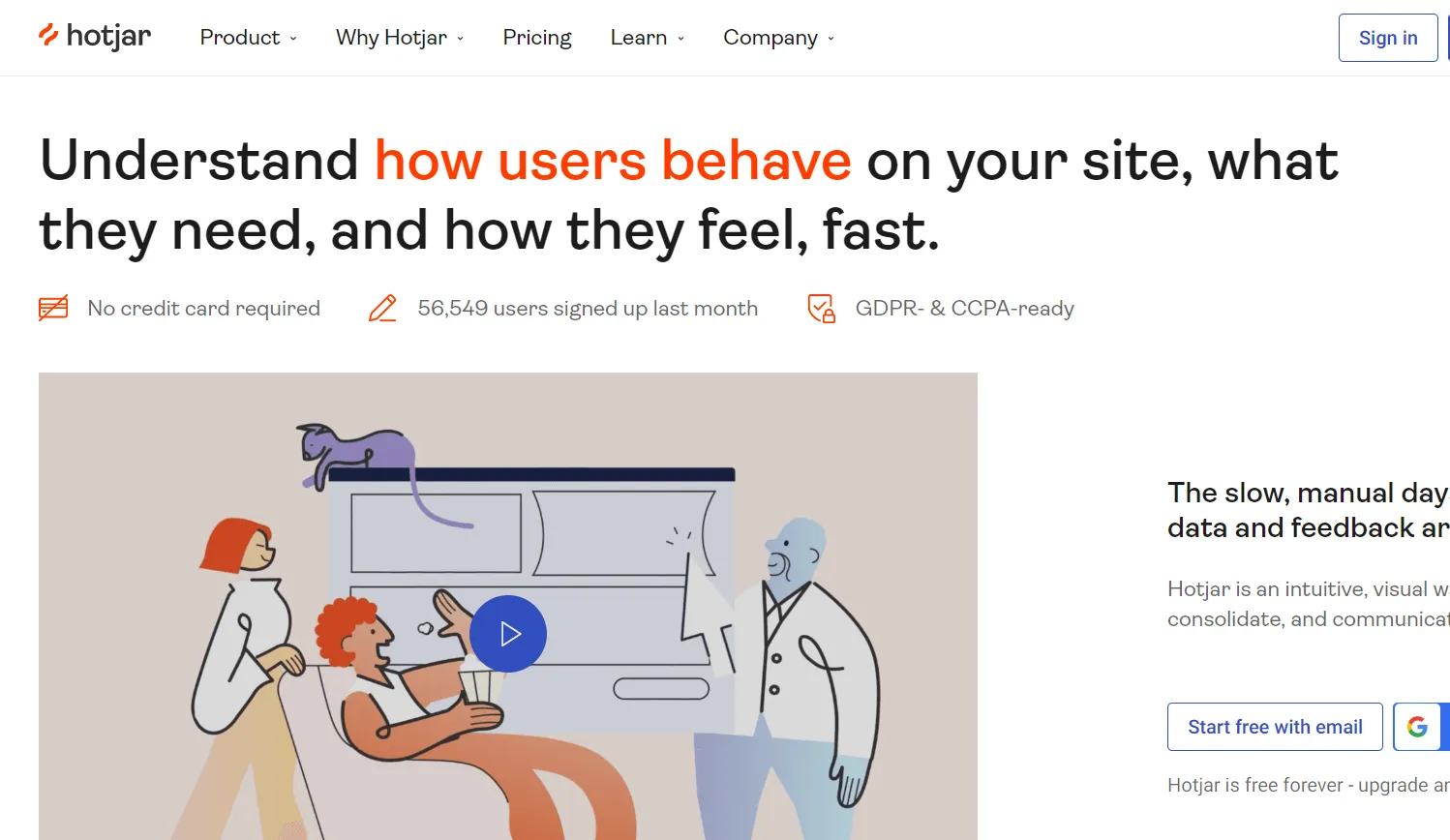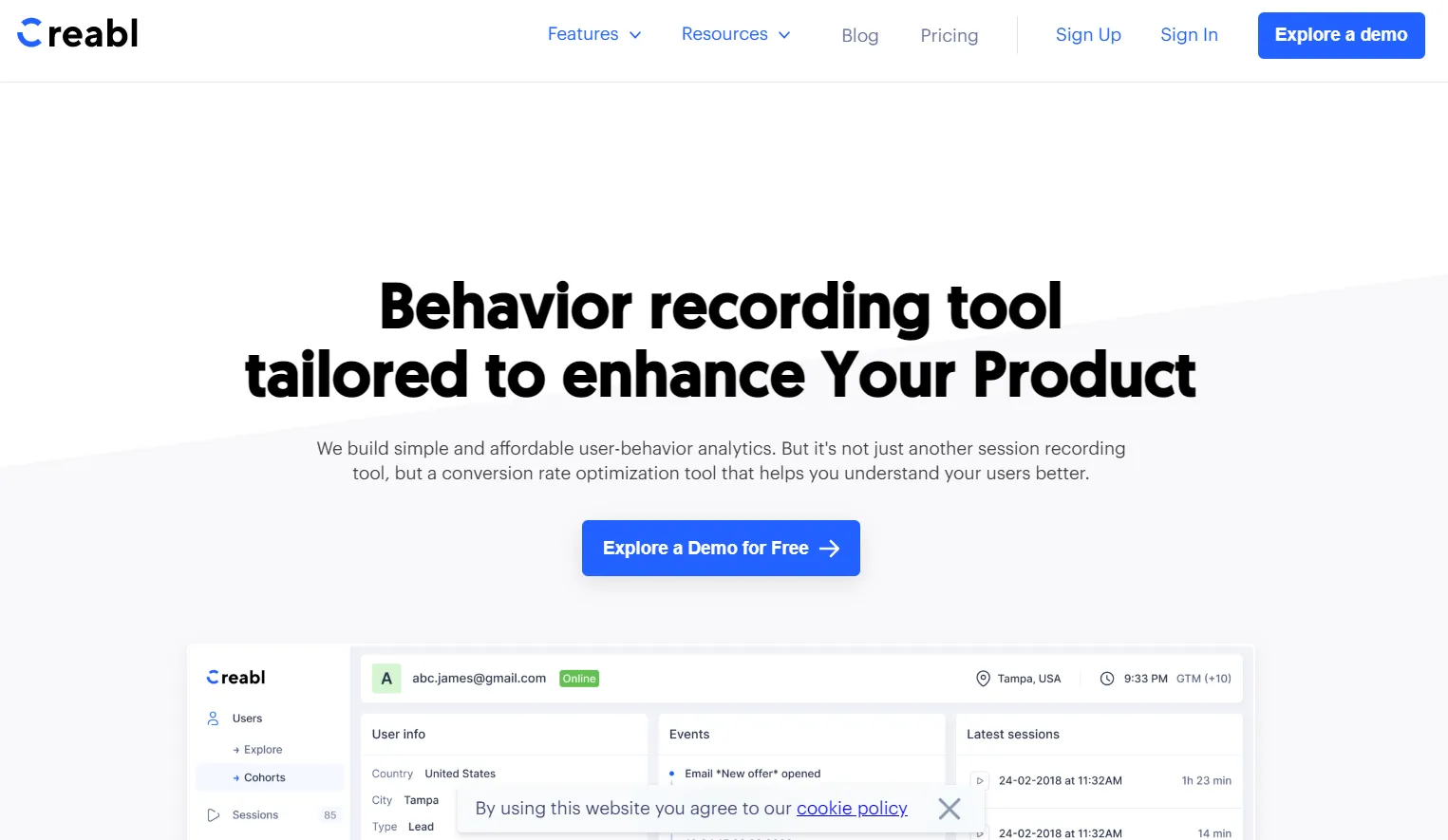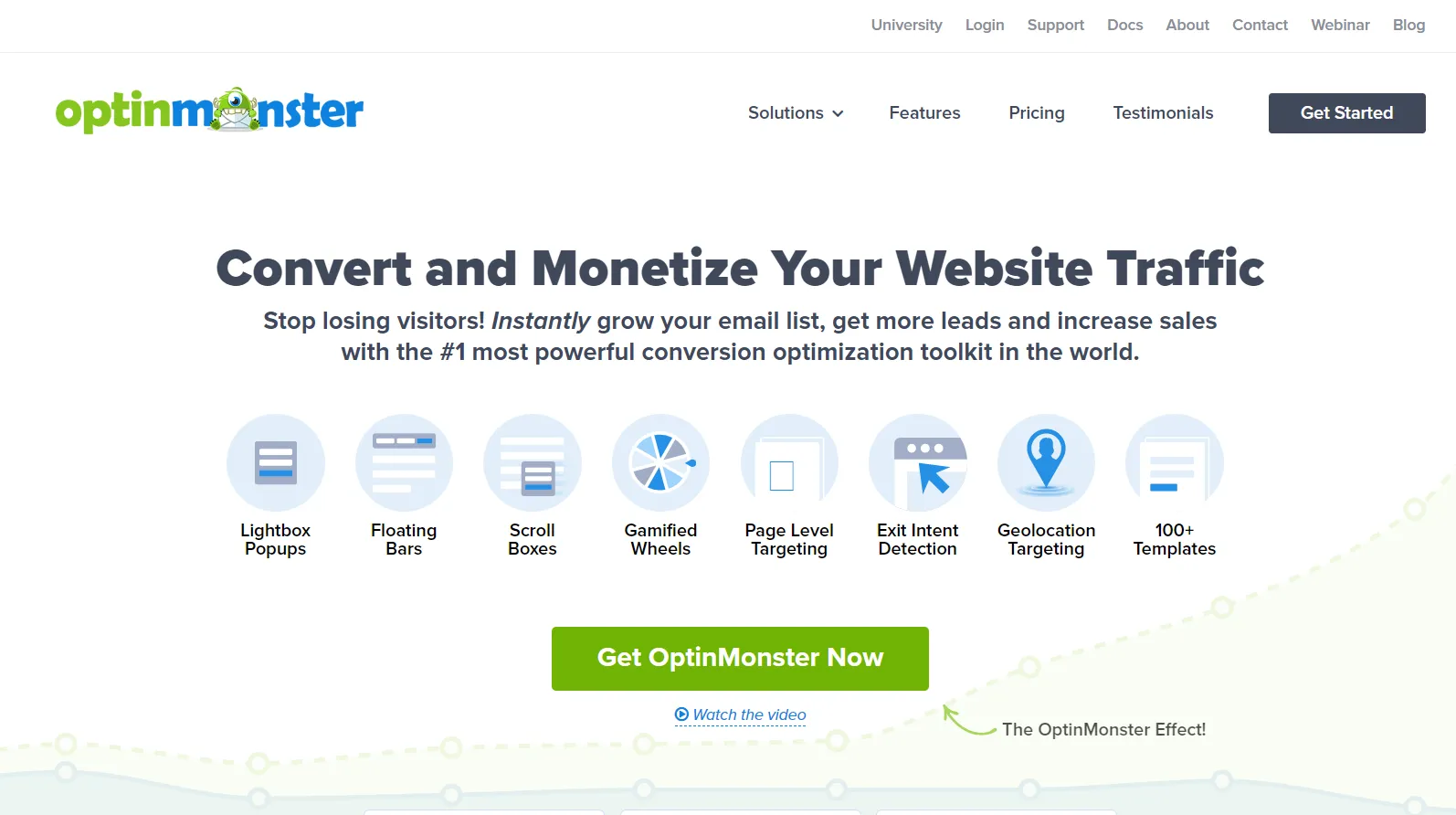
Conversion Rate Optimization (CRO) is a system of measures aimed at increasing the number of site visitors who eventually become customers or perform the desired action on a web page. They are applied to improve conversion of an online store, commercial or non-commercial websites. This allows you to fix existing errors, attract more unique visitors and improve the process of interacting with them.
Principles of CRO
There are certain principles of CRO that need to be taken into consideration while working at conversion rate changes and improvements.
- Have a Clear Value Proposition
Customers take the next step in your sales to funnel when they better understand what sets you apart from the competition. Incentivize Your Customers to Act
Through the website interaction, you incentivize customers to use something from your brand. It’s great to stimulate customer engagement with a variety of activities to call them for action.
- Lower Barriers to Conversion
There are several obvious culprits that are to blame for your website conversion rate dropouts – landing page changes, website redesigns, new offers, price changes, promos, or sales, etc. The task is to reduce those activities that may interfere with your web resource interaction dramatically if possible or at least mitigate their possible aftermath.
- Test CRO Internet
When you’re on testing, don’t adjust the results to fit the hypothesis. If the test results do not support your hypothesis, you need to accept it and move on to the next test. CRO is a continuous process. It’s not something you do once and for all.
- Make the Customer Feel Safe
What is CRO without the customer’s comfort? If you give your customers a high level of comfort, security, quality and honesty, the comfort level will increase, and so will your CRO.
Benefits of Conversion Rate Optimization
What does a CRO do and how? The most obvious is an increase in the number of sales and income. You will also receive additional benefits:
- Increased user confidence.
- Development of word of mouth and positive reviews.
- Growth in ROAS
Increasing the conversion rate of the website allows you not to increase advertising budgets.
- Website UI/UX improvement.
It is more convenient and easier for the user to apply to the website and make purchases. In terms of cost-effectiveness, CRO is more efficient because it works with existing visitors, showing an impact on the potential resources available. However, without organic traffic, your business cannot survive in a long run. That is why it often happens that CRO and SEO are used together: CRO – to attract organic traffic, SEO – for reach out and conversion, which makes a great combo, and saves time & budget.
Steps in the CRO Process
People are very irrational in their choices. A customer journey is a place of insane nonsense, absolute chaos, where there is often simply no chance to explain experience or consumer behavior logically. When you try to aim at some target audience and predict its reaction and behavior, it appears to act irrationally in purchases and rather tend to happiness, rather than benefit from whatever the purchases. Mind that in your CRO optimization steps.
Step 1: Assessment
There may be dozens of factors on your site that are causing you to have a low conversion rate.
Perhaps the customer journey is too complicated. Maybe your download time is too long. Or there is a lot of watery text among your content. Maybe your site was made by designers without the slightest sense of beauty or functionality, etc.
With the help of GA or similar analytics you can analyze both the average time on the website, comparing it with the changes that you made to the site, and, for example, the entire sales funnel of a particular marketing channel (or even a keyword) in detail with the falling off the amount of traffic on every stage.
Quality CRO allows you to keep up with changes, both at the level of changing user behaviors and at the level of changes in UX / UI in your market. CRO is the only way to increase (or at least keep the same if you are a market leader) the percentage of conversions on the site.
In the case you prefer some custom analytics or prefer a mix of GA and similar, everything depends only on your budget and imagination.
Step 2: Hypothesis development
Take one particular problem that you have identified and think about the possible causes that lead to it. For example, 90% of users do not click on the button and scroll down, several hypotheses immediately appear: the button is hard to notice, you do not convince the user with your design and communication, the button does not work, and so on.
Or in GA, the bounce rate increased sharply immediately after the redesign of a block or even a font, the hypothesis suggests that it is the redesign to blame. Or maybe the traffic source has changed and this has caused an increase in bounces. It can be anything!
Step 3: Pick the testing method
Once you have chosen a hypothesis to test, you need to choose a test method. Split testing (A/B testing) is the simplest method to test one variable against the original version of the page/site. For example, only a button or only a font, one thing at once may be tested.
If the task is to test several variables, then the best option would be multivariate testing which is however too time and budget eating. For example, a simultaneous test of text size, CTA, color, etc.
Step 4: Segment Target Audience
Audiences for all test cases should be of the same criteria. However, the mistake of many marketers here may be poor segmentation and lack of smart criteria. This can lead to the fact that in the end, you get groups of people who simply cannot be compared.
Step 5: Test, Repeat
You do the tests and get the results. There are only two possible scenarios here. Either your initial hypothesis was correct or it wasn’t. Conversion will either go up or down. If your hypothesis turns out to be correct, make the appropriate changes and track your CRO over again. If the result is negative, move on to testing the next hypothesis. Run again, and so on until you find proof that the hypothesis was right.
How to calculate the conversion rate?
Conversion rates are calculated by simply taking the number of conversions and dividing thуь by the number of total ad interactions that can be tracked to a conversion during the same time period. For example, if you had 50 conversions from 1,000 interactions, your conversion rate would be 5%, since 50 ÷ 1,000 = 5%.
Why is CRO Important?
To improve your business performance, you need to track certain rates. CRO is one of them. It’s great if you already have a good advertising company. The problem is that impact on the site does not incentivize the user to buy. Even the increase in the advertising budget does not correspond to the expected result. Therefore, you need to work on increasing the conversion rate. Conversion rate optimization is essential for different types of businesses and different verticals.
The best conversion rate optimization tools

Google Optimize
Google Optimize is essentially an A/B testing tool for page layouts on a website or online store. Once you install it, you can experiment with, for example, file designs and color CTA buttons, then, once the results are in, a winner is implemented.

HotJar
A poorly placed CTA or any other button can cost you thousands of dollars. And it sucks. Especially if all it takes is a slight adjustment to its placement. With HotJar you can do all of them and a whole lot more thanks to HeatMaps and Visitor Recording software.

Creabl
Here you may see every user interaction via Session Recording, build funnels on the fly, track user’s click maps using heatmaps, use cohorts to divide your users into groups, and check product engagement through retention reports. It’s common for Creabl users to increase their conversion rates by 5-10% after carefully examining the results from multiple recording sessions and heatmaps.

OptinMonster
This tool is especially useful while working with email leads. As a CRO tool, it’s 100% recommended.
You can now also store all of your leads, so you don’t even need an email marketing package to start capturing emails. If you’re looking to grab more emails, in quick succession, OptinMonster should be top of your list.
Summary
Define conversion rate optimization because conversion rate optimization turns your performance marketing into a complete marketing strategy. It will continuously improve the results of your advertising and the effectiveness of the website and grow your business. Apply conversion rate optimization tools to achieve great results with your crop optimization in no time.
What is conversion?
What is a CRO? This is a set of works to increase the conversion rate on the website. It is planned based on user behavior statistics without significant changes in the advertising budget. That is, after changes in content or design, the site begins to bring more sales or less. At the marketing strategy level, CRO is an ongoing challenge.
What is a CRO example?
For example, if you sell online products, a conversion for you may be purchased, or at least the number of website visitors that add a product to their shopping cart, depending on your marketing goal. If you sell your products or services online to businesses, you might be measuring the number of leads your website collects or a number of white paper downloads, your SaaS subscriptions, etc.
